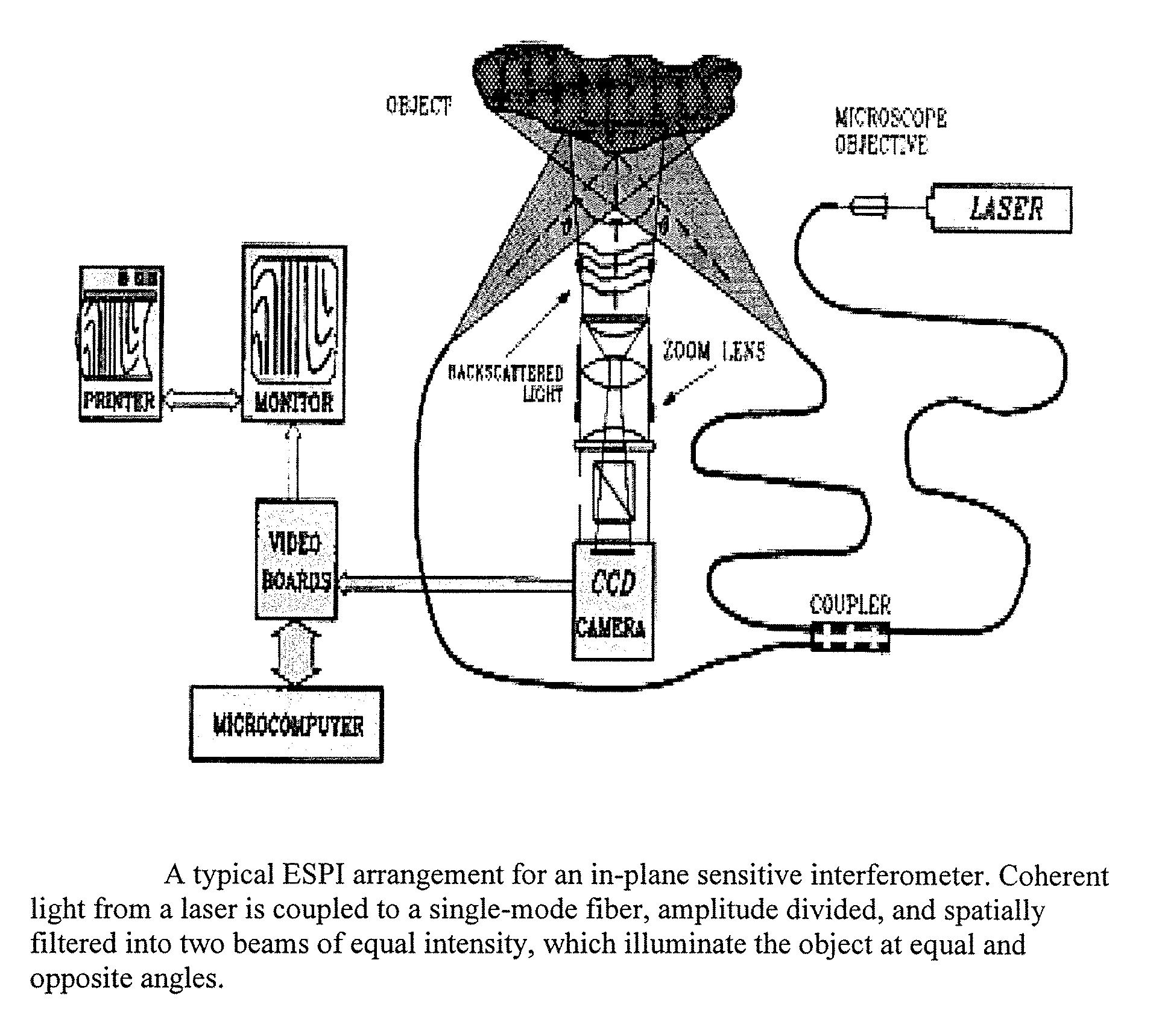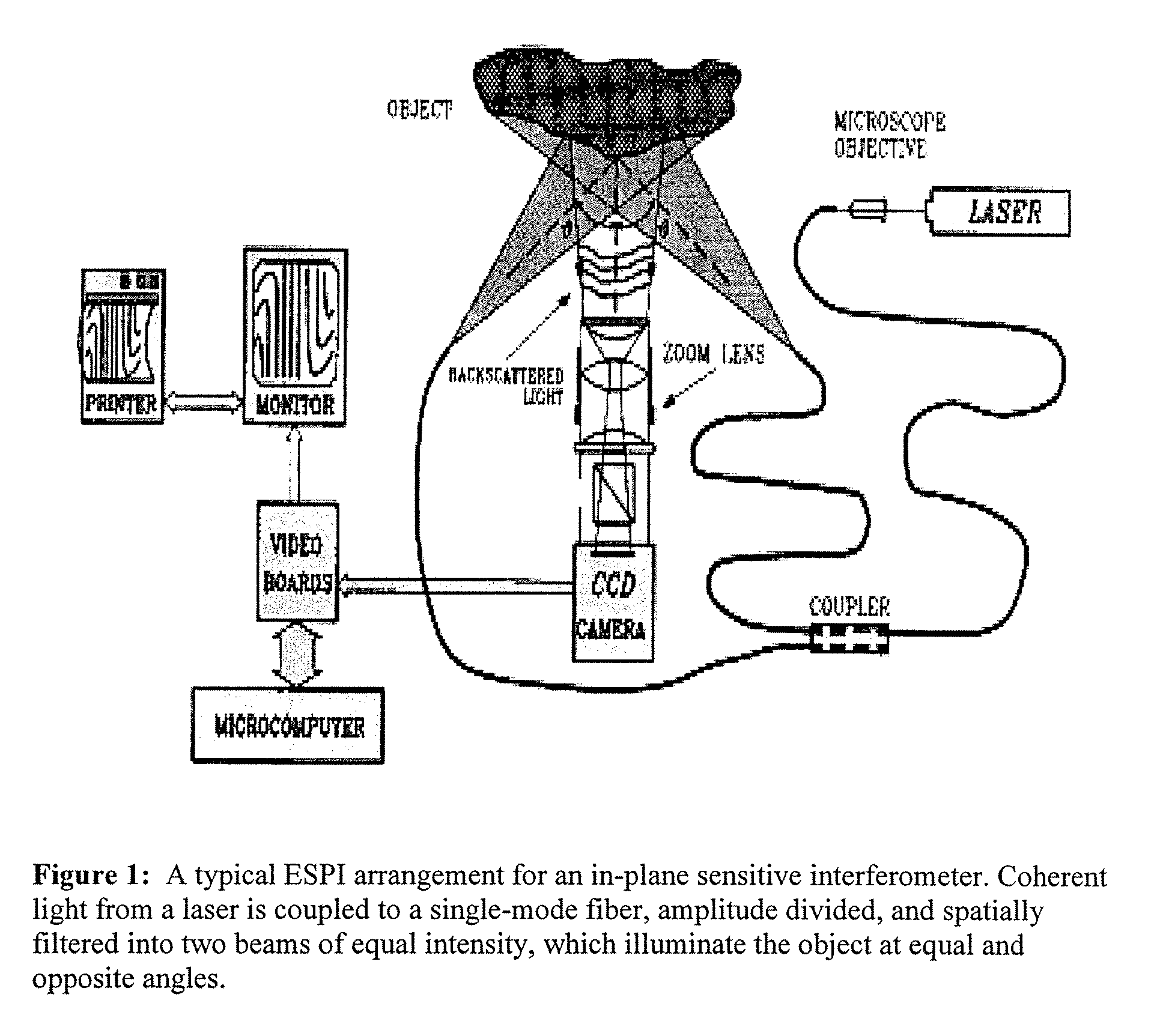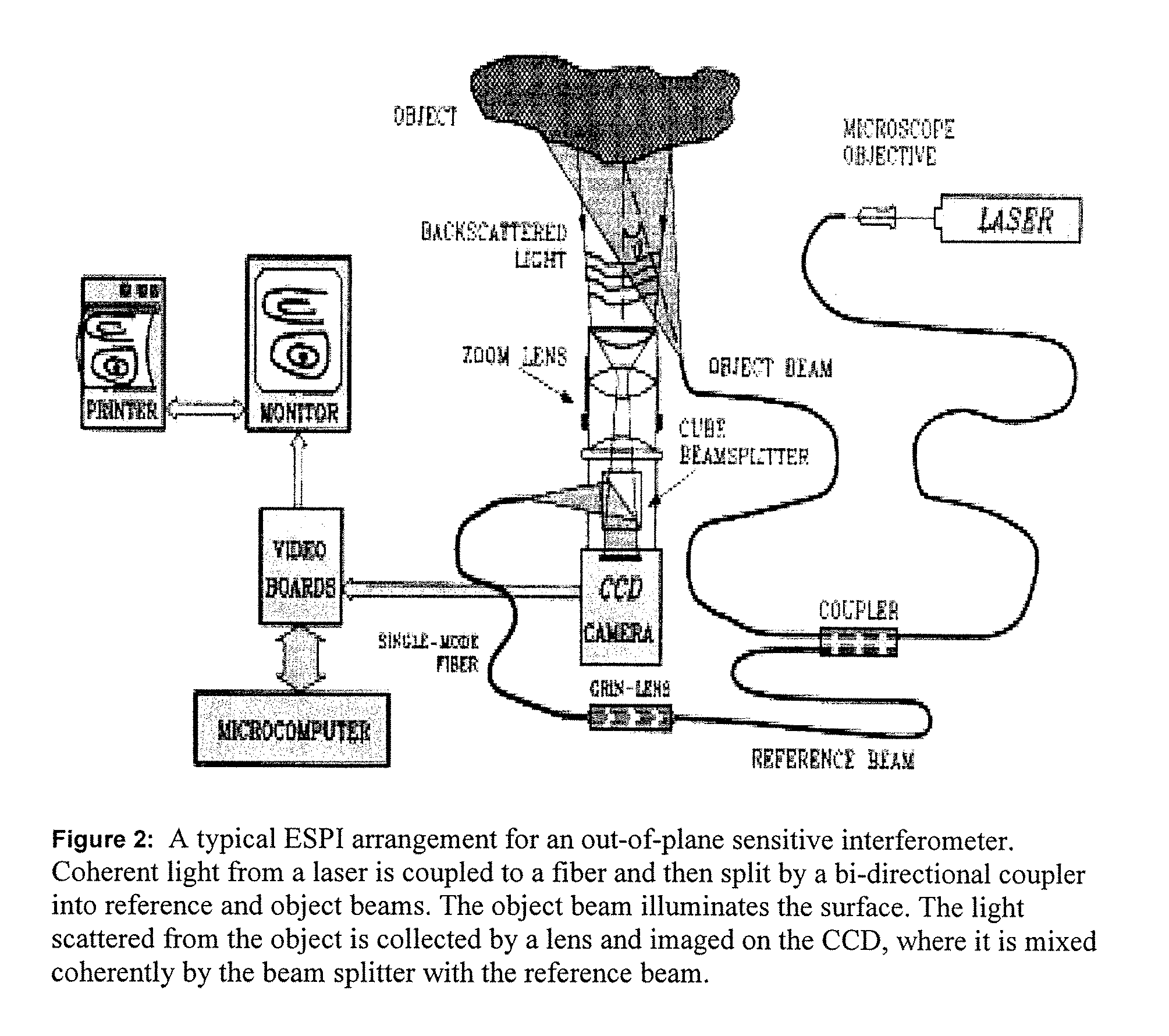Method for resolving phase in electronic speckle interferometry
a technology of electronic speckle pattern and phase resolution, applied in the direction of force measurement, force measurement, force measurement by measuring optical property variation, etc., can solve the problem of computational burden of all such methods
- Summary
- Abstract
- Description
- Claims
- Application Information
AI Technical Summary
Problems solved by technology
Method used
Image
Examples
Embodiment Construction
[0012]The invention is a procedure to determine the phase of a perturbed object in an interferomic device. The invention can be used for both in-pane and out-of-plane interferometry. The following notation will be used.[0013]I(x,y) is the measured output beam intensity of the non-deformed object, as measured on the in-plane interferogram by means of the imaging system such has an array of pixels having individual intensities and each having corresponding respective transverse coordinates (x,y); (note, “non-deformed” refers to the lack of a later deformation or movement; for instance if three frames are recorded, F1, F2 and F3 at different times; F1 is a non-deformed frame with respect to F2 and F3; while F2 is a non-deformed frame only with regards to the later deformed frame, F3).[0014]Id (x,y) is the output beam intensity of the perturbed (henceforth considered a deformation) object[0015]I1 (x,y) is the beam intensity measured on one arm of the device, and I2 (x,y) is the beam int...
PUM
 Login to View More
Login to View More Abstract
Description
Claims
Application Information
 Login to View More
Login to View More - R&D
- Intellectual Property
- Life Sciences
- Materials
- Tech Scout
- Unparalleled Data Quality
- Higher Quality Content
- 60% Fewer Hallucinations
Browse by: Latest US Patents, China's latest patents, Technical Efficacy Thesaurus, Application Domain, Technology Topic, Popular Technical Reports.
© 2025 PatSnap. All rights reserved.Legal|Privacy policy|Modern Slavery Act Transparency Statement|Sitemap|About US| Contact US: help@patsnap.com



